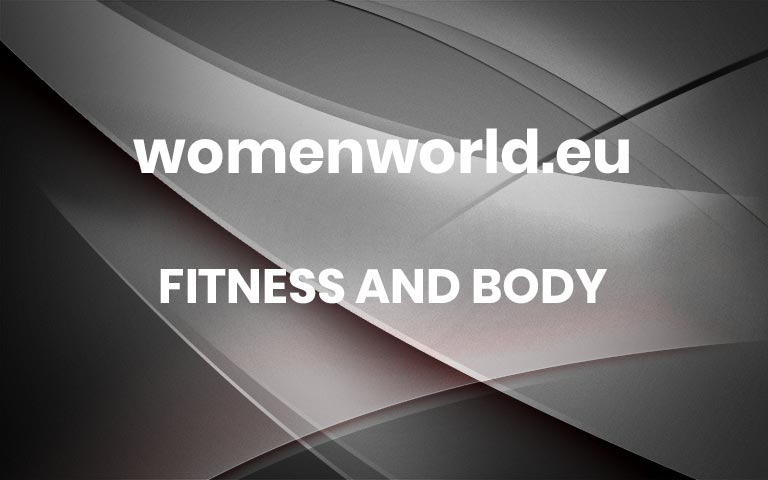From your Kim Kardashians to your Meg The Stallions, everyone wants a firmer and bigger butt. And while you’ll definitely tone up on the trails or hitting the treadmill, you’ll need to add some muscle (and weights) to really build a toned toosh. Here, build a strong backside with this bigger butt workout – you’ll be dying to show yours off.
Build A Bigger Butt Workout
Time: 30 minutes
Equipment: Mat
Good for: Butt
Instructions: Choose two bilateral (both legs) exercises and two unilateral (single leg) exercises and pair them together for one workout. Complete four sets of five reps with heavier weights for the bilateral exercises, and complete four sets of 10 reps with lighter weights for the unilateral exercises. Once you’ve completed all sets of one move, continue to the next.
Dumbbell Deadlift
How to: Holding two dumbbells in your hands, stand with your feet hip-width apart, knees slightly bent. Position the weights in front of your thighs, palms facing your body. Keeping your knees slightly bent, press your hips back as you hinge at the waist and lower the dumbbells toward the floor. Squeeze your glutes to return to standing. That’s one rep. Complete four sets of five reps.
Goblet Squat
How to: Stand with your feet shoulder-width apart and hold a weight in front of your chest, elbows pointing toward the floor. Sit back and bend your knees to lower into a squat. Push yourself back to start. That’s one rep. Complete four sets of five reps.
Bulgarian Split Squat
How to: Stand about two feet in front of a step; extend your right leg back and place the top of your foot on the step. (Optional: Hold a dumbbell in each hand.) That’s your starting position. Bend your knees to lower your body as far as you can (or until your knee gently taps the ground), keeping your shoulders back, chest up, and hips facing forward. Pause, then press through your left heel to return to start. That’s one rep. Complete four sets of 10 reps on each side.
Stability Ball Hamstring Rollout
How to: Lie on your back with your knees bent, feet on top of a stability ball. Brace your core, then press into your heels and squeeze your glutes to raise your hips toward the ceiling. Lift your left leg straight up into the air. Hold the position as you straighten your right leg. Then, engage your hamstrings, bend your right knee, and bring your foot toward your butt. That’s one rep. Complete four sets of 10 reps on each side.
Weighted Lateral Lunge
How to: Holding a pair of kettlebells cleaned at your chest, stand up straight with your feet hip-width apart. Take a large step to the left, sit your hips back, and lower down until your left knee is nearly parallel with the floor. Your right leg should be straight. Return to start. That’s one rep. Complete four sets of 10 reps on each side.
Weighted Fire Hydrant
How to: Get on all fours on top of your mat. Tuck a two to six kilo dumbbell in the crease of your right knee. Keeping that leg bent at 90 degrees, lift it out to the side, stopping at hip height. Return to start. That’s one rep. Complete four sets of 10 reps on each side.
Weighted Donkey Kick
How to: Get on all fours on top of your mat. Tuck a two to six kilo dumbbell in the crease of your right leg. Keep that leg bent at 90 degrees as you lift it behind you until your knee is in line with your hip, foot flexed. Reverse the movement to return to start. That’s one rep. Complete four sets of 10 reps on each side.
Walking Lateral Lunge
How to: Stand up straight, with your feet together. Hold a kettlebell in your right hand, and raise your left hand so it’s parallel to the ground, and in a fist. Lift your left foot and take a big step to the left. Sit your hips back, and lower down until your dumbbell nearly touches the ground. Switch hands, and repeat on the other side. That’s one rep. Complete four sets of 10 reps on each side.
Front Racked Reverse Deficit Lunge
How to: Stand up straight on small riser, step, or box with a set of kettlebells cleaned in front of your chest. Lift your right knee up to hip height in front of your body, then bring it behind you until the ball of your foot reaches the ground. Slowly lower down until both knees form 90 degree angles. Return to your knee-lifted position. That’s one rep. Complete four sets of 10 reps on each side.
Weighted Hip Thrust
How to: Lie on your back with your knees bent, feet on the floor 12 to 16 inches from your butt. Hold a dumbbell in both hands and rest it on top of your pelvis. Brace your core, then press into your heels and squeeze your glutes to raise your hips toward the ceiling. Hold the position for two seconds before lowering to start. That’s one rep. Complete four sets of five reps.
1.5 Stance Deadlift
How to: Hold a kettlebell in front of your thighs with both palms facing toward your body. Stagger your legs, stepping your right foot back and your left foot forward. Your right heel should be off the ground. Push your hips back as you hinge forward, lowering the kettlebell while keeping it close to your legs. Once your hips reach 90 degrees, return to start. That’s one rep. Complete four sets of 10 reps on each side.
Cossak Squat With Overhead Press
How to: Begin by standing up straight, with your feet slightly wider than shoulder-width apart, and a kettlebell in each hand. Rack the kettlebells in front of your chest, and then raise your right arm straight into the air. Lift your left foot and take a large step to the left, then sit your hips back and lower down until your thighs are nearly parallel to the ground. Straighten your left leg and rise back up. That’s one rep. Complete four sets of 10 reps on each side. More



